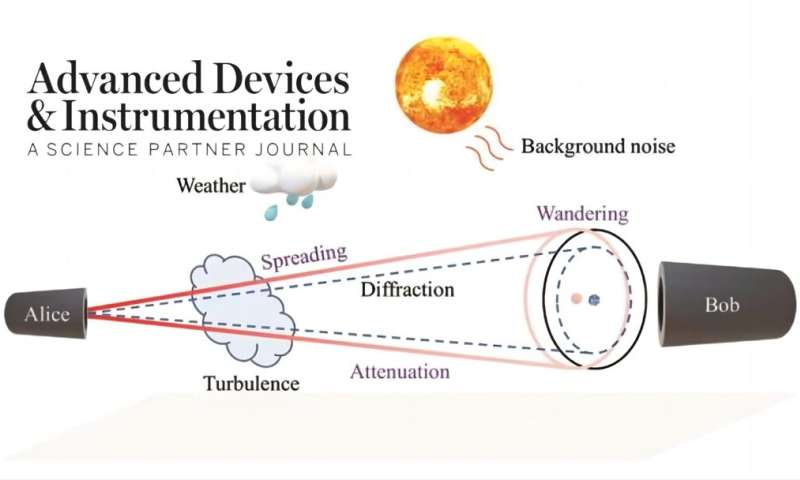Review explores free-space quantum secure direct communication basics and progress

Free-space quantum secure direct communication (QSDC) does not require the laying of optical fibers, which can effectively prolong the transmission distance and break the limitation of terrain. It is one of the solutions to the "last mile" of communication. Satellite-based QSDC is a necessary path to achieve global QSDC.
In this review article, the authors first introduce the basic principles of QSDC, the foundation for quantitative security analysis, and typical protocols. They analyze the characteristics of some typical protocols and their relationships. The review is published in the journal Advanced Devices & Instrumentation.
During the protocol design phase, the channel noise and loss are generally not considered. To achieve secure and reliable communication in practical channels with noise, loss, and eavesdropping, the combination of various modern communication technologies and QSDC are required. The article provides an overview of the coding techniques used in QSDC, including error-correcting codes, anti-loss codes, secure coding, and capacity-enhancing techniques.
The article discusses the applicability of typical protocols in free-space communication scenarios, which have channel characteristics such as diffraction, turbulence, non-ideal weather, and background noise. It also summarizes the related theoretical and experimental progress, including experimental free-space QSDC and secure repeater networks using a mixture of fiber and free-space channel.
This article also discusses the problems of free-space and satellite-ground QSDC, such as communication wavelength selection, photon-encoding strategy, and feasibility of satellite-ground QSDC. In the future, there are still many research topics to be explored, such as long-distance free-space QSDC, mobile-platform-based QSDC, and space-to-ground integrated QSDC network.
The authors propose a scheme called classical-cryptography assured imperfect device (CAID) QSDC, as a technological development roadmap for the practical application of QSDC. While quantum communication theoretically achieves unconditional security, the imperfect devices used in practical systems pose certain security risks.
On the one hand, these problems can be addressed through new underlying protocols, such as measurement-device-independent and device-independent protocols. The CAID-QSDC scheme involves using a non-perfect QSDC system to transmit classical encrypted ciphertext. In the event that an eavesdropper steals the data transmitted via QSDC using an unknown vulnerability, they can only obtain the ciphertext, and the information itself still has the protection of advanced classical cryptography.
Additionally, using QSDC to transmit ciphertext makes it difficult for eavesdroppers to steal the transmitted ciphertext via quantum channels, reducing the risk of "store first, decrypt later" in classical secure communication. This scheme is an organic fusion of classical cryptography and QSDC, which is conducive to building a higher-level of secure communication system. Importantly, QSDC is compatible with the existing internet and does not require extensive changes to the current network.
The development of QSDC has demonstrated its potential for applications. It is compatible with both classical and post-quantum cryptographic systems, and can jointly build a more secure communication system. Through free space, particularly via satellite-to-ground and satellite-to-satellite QSDC, the distance and scope can be expanded. Applications of CAID QSDC can be launched now and upgraded iteratively to improve performance.
More information:
Dong Pan et al, Free-Space Quantum Secure Direct Communication: Basics, Progress, and Outlook, Advanced Devices & Instrumentation (2023). DOI: 10.34133/adi.0004
Provided by Advanced Devices & Instrumentation